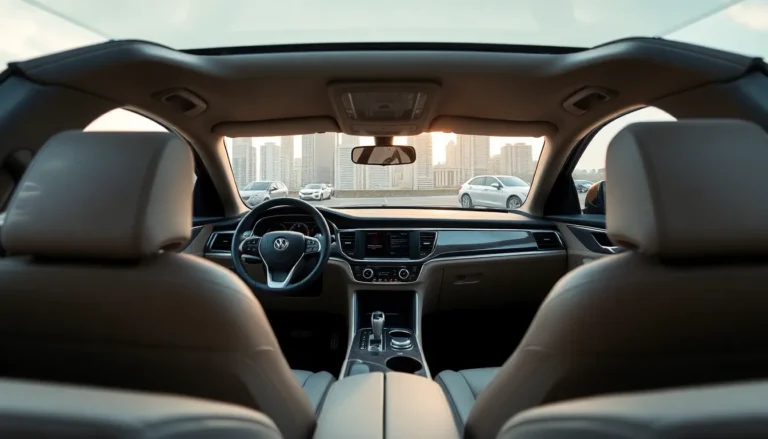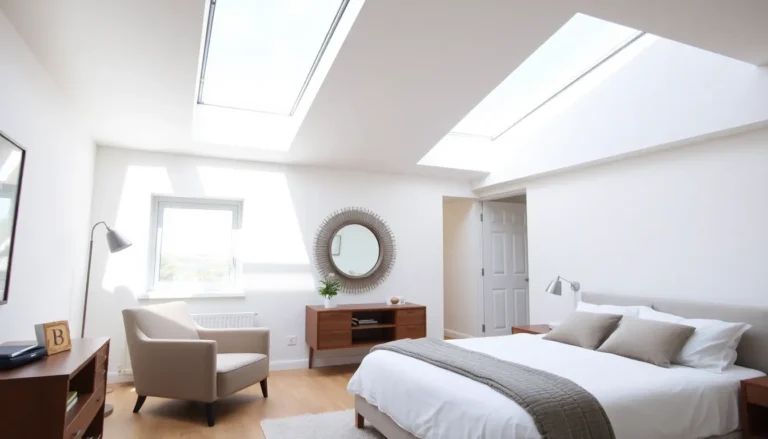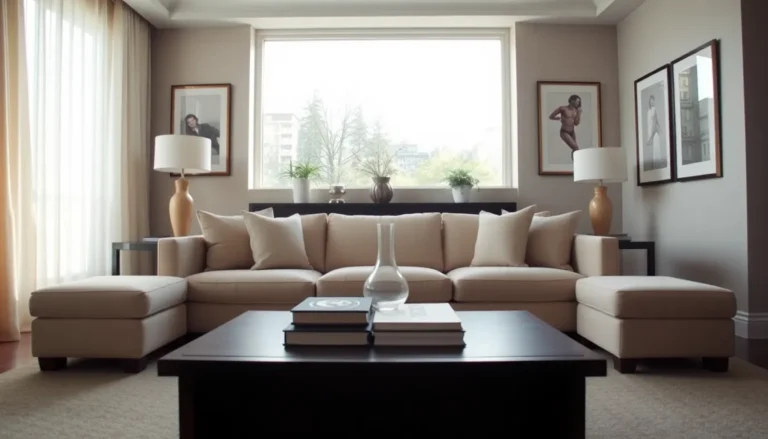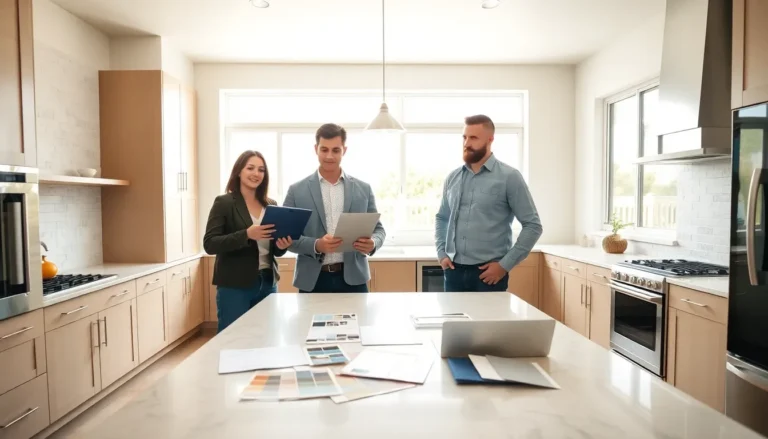Imagine a home where your furry friends can frolic freely without fear of ruining the decor. In the world of pet-friendly design, that dream becomes a reality. It’s all about striking a balance between style and comfort, ensuring that both pets and their humans can coexist in harmony.
Table of Contents
ToggleUnderstanding Pet-Friendly Design
Pet-friendly design creates environments that accommodate the needs of household pets while maintaining style. This concept ensures both pets and their owners enjoy shared spaces.
Definition of Pet-Friendly Design
Pet-friendly design refers to the intentional integration of features that cater to pets’ comfort and well-being. It includes durable materials that resist scratching and stains, like leather or microfiber, as well as pet-accessible areas such as cozy nooks or ramps. Such designs often incorporate functional elements, like feeding stations and litter box placements, within aesthetically pleasing layouts.
Importance of Pet-Friendly Design
Pet-friendly design enhances the quality of life for both pets and their owners. Ensuring safety and comfort reduces stress for pets, fostering a harmonious living environment. Consideration for pets’ preferences promotes a happy home, reducing the likelihood of destructive behaviors. Additionally, designing with pets in mind can increase a property’s appeal and marketability, making it a smart investment for homeowners.
Key Elements of Pet-Friendly Design
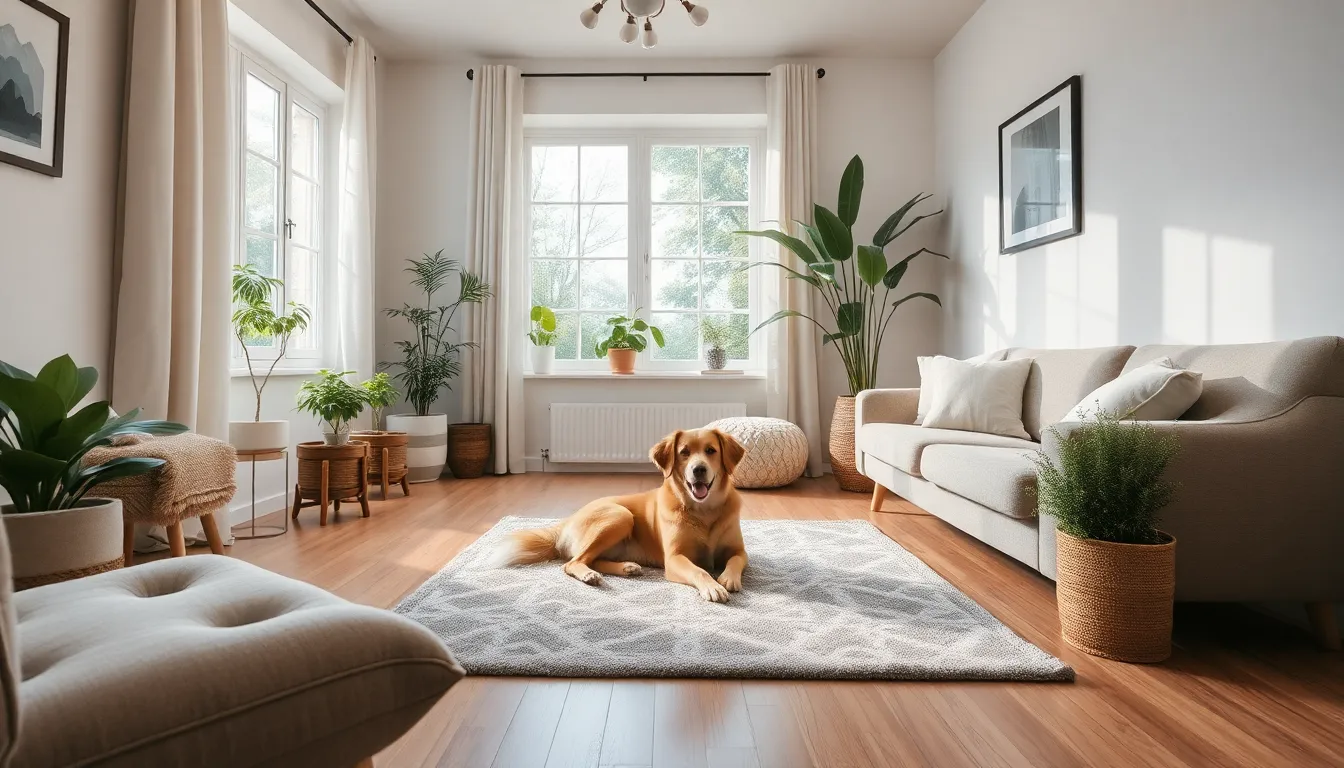
Pet-friendly design focuses on creating inviting spaces for both pets and their owners. Essential elements contribute to comfort and safety in every room.
Safe and Comfortable Spaces
Creating safe spaces improves pets’ well-being. Elevated areas provide a sense of security, while cozy nooks offer perfect resting spots. Significant attention to window placements allows pets to enjoy outdoor views without risks. Incorporating non-toxic plants enhances the environment, ensuring safety for curious animals. Smooth transitions between spaces reduce the chances of injuries when pets explore.
Durable Materials and Furnishings
Selecting durable materials significantly elevates pet-friendly design. High-performance fabrics resist stains and scratches, making cleanup easier. Various flooring options, like tile or vinyl, withstand wear from playful paws. Choosing furniture with sturdy frames ensures longevity, even during rough play. Indoor rugs should be washable to maintain cleanliness. Adopting slip-resistant surfaces reduces accidents and enhances stability.
Designing for Different Pets
Designing a home requires consideration of the unique needs of different pets. Each type of pet has specific behaviors and preferences that influence layout and features.
Cats and Their Needs
Cats thrive in spaces that provide vertical options. Cat trees and shelves encourage climbing and exploration, appealing to their natural instincts. Cozy hiding spots, like enclosed beds or boxes, allow them to feel secure. Non-toxic plants enrich the environment while contributing to aesthetics. Additionally, durable carpets or mats can withstand scratching without compromising style. Many cats appreciate window perches that showcase outdoor views and keep them engaged.
Dogs and Their Requirements
Dogs benefit from spacious areas for movement and play. Creating a designated spot for their bed fosters a sense of security. Durable flooring, such as tile or luxury vinyl, can handle muddy paws and spills without damage. Accessible storage for toys and leashes aids in organization and cleanliness. Outdoor spaces crafted with secure fencing provide safe areas for exercise and interaction. Consider using slip-resistant surfaces to prevent accidents during play. Pet-friendly couches and washable covers also make it easier to maintain a clean environment.
Integrating Pet Features into Home Design
Integrating pet features into home design optimizes comfort and safety for both pets and their owners. Thoughtful design decisions enhance living spaces, combining functionality with aesthetic appeal.
Outdoor Spaces for Pets
Creating outdoor spaces for pets encourages healthy behaviors and provides secure areas for play. Fenced yards with shaded areas ensure safety while allowing pets to explore freely. Durable, non-toxic landscaping materials promote a sustainable environment. Additionally, designated pet zones with gravel or grass contribute to easier upkeep. Incorporating pet-friendly furniture, such as weather-resistant loungers, can enhance relaxation for pets and their owners alike. Finally, accessible water stations encourage hydration and ensure pets remain comfortable during outdoor activities.
Indoor Considerations
Focusing on indoor considerations creates a harmonious living environment. Selecting non-toxic materials for furnishings protects pets from harmful substances. Soft, durable surfaces for lounging, such as washable rugs, simplify cleaning and prevent odors. Living spaces should include cozy nooks that provide pets with a sense of security. Shelving for pet supplies and toys helps maintain order and encourages easy access. Finally, installing pet doors allows freedom of movement and reduces stress, enhancing the overall comfort of both pets and their owners.
Benefits of Pet-Friendly Design
Pet-friendly design offers multiple advantages that enhance the living experience for both pets and their owners.
Enhancing Pet Welfare
Creating spaces that cater to pets promotes their physical and emotional well-being. Elevated areas provide vantage points, making pets feel secure and less anxious. Cozy nooks serve as resting spots, allowing pets to retreat when they need quiet time. Non-toxic materials used throughout the home ensure pets remain safe from harmful substances. Additionally, durable and slip-resistant surfaces minimize the risk of accidents. Accessible outdoor areas encourage exercise, which plays a critical role in maintaining a pet’s health. Thoughtful design prioritizes the needs of pets, fostering a harmonious environment where they thrive.
Improving Home Aesthetics
Pet-friendly design harmonizes style and function, improving overall home aesthetics. Selecting chic, high-performance fabrics can elevate a room’s decor while remaining practical. Moreover, incorporating stylish yet sturdy furniture complements design choices without sacrificing durability. Choosing color palettes that mask stains becomes essential in maintaining a fresh look. Decorative pet zones can integrate seamlessly with existing decor, enhancing visual appeal. Attractive storage solutions for pet supplies blend functionality with style. Ultimately, a well-designed space becomes a reflection of the owners’ lifestyle while accommodating their furry companions.
Creating a pet-friendly home is more than just a trend; it’s a thoughtful approach to living that benefits both pets and their owners. By prioritizing safety and comfort through smart design choices, homeowners can foster a harmonious environment. Incorporating durable materials and dedicated spaces for pets enhances their well-being while maintaining aesthetic appeal.
This design philosophy not only improves the quality of life for furry companions but also adds value to the property. Ultimately, a well-executed pet-friendly design reflects a lifestyle that embraces the joy of sharing a home with beloved pets, ensuring that every member of the household feels secure and at ease.


